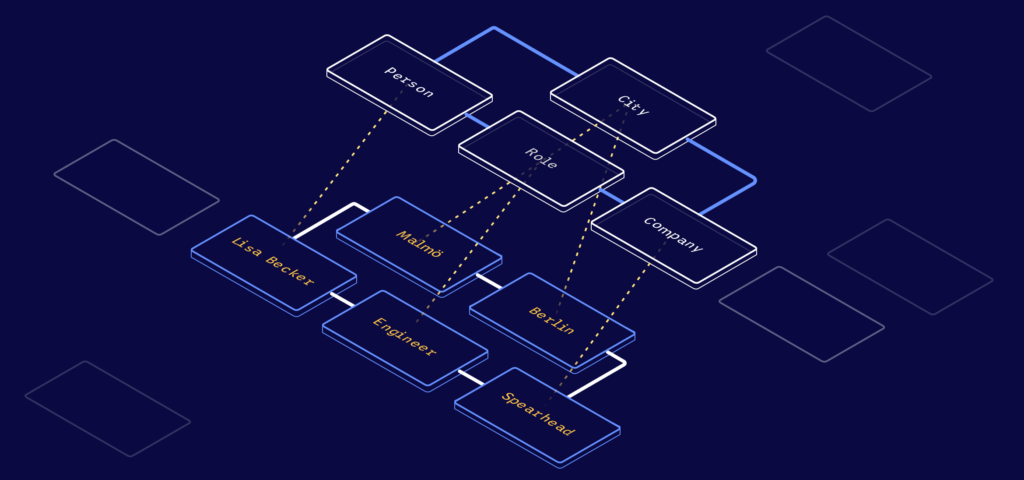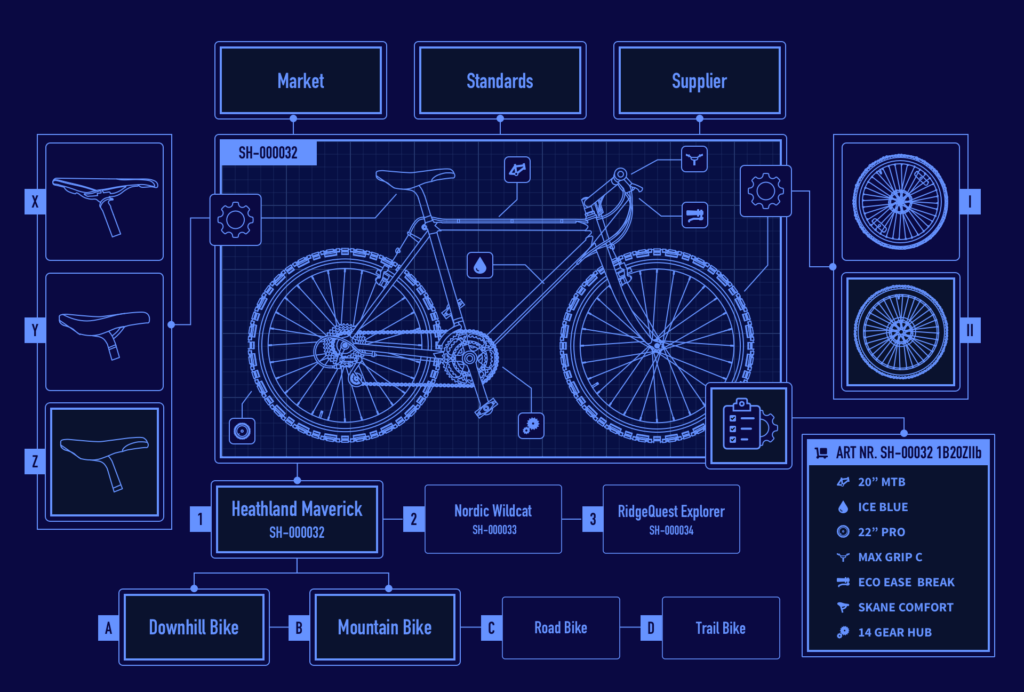Digital Transformation
inorigo’s® uses range from creating complete Digital Twins to specialized end-user solutions. From data governance to service & product configuration. Providing AI with contextualized information to create more nuanced and accurate results or harmonizing data from other systems.
Built for many types of users
With inorigo®, users throughout the business may engage in information ownership through powerful governance tools and user-friendly applications, and systems across the information landscape can interconnect seamlessly for data distribution and harmonization.
Low-code graphical builders are used to produce and facilitate the constituent solutions, which enables partners and trained business users to build and operationalize high-end solutions. It even provides users who lack development and database competence in building and facilitating sophisticated production ready solutions.
Digital Transformation: From complexity to clarity
Information & Data Modeling
The inorigo® platform is built on metagraph technology which gives it unique capabilities for mastering complex information. It allows for creating scalable data models that grow iteratively and allows for producing flexible and sustainable solutions.
inorigo’s® Model Builder allows for creating dynamic Metagraph models without coding experience. This allows information architects, business stakeholders, and IT to prototype and evaluate the models before implementing them. Models can be visualized as graphs that can be shared and are easily iterated even when running in full operative mode.
Creating Ontology & Knowledge Graphs
The Model Builder and inorigo’s® metagraph capabilities make it easy to create ontologies and knowledge graphs. Ontologies describe the formal naming and entities, properties, and relationships within a specific domain and provide context, metadata, and structure to Knowledge graphs.
Knowledge graphs tend to represent specific instances of those entities and their relationships. With inorigo’s® Model Builder it is possible to work with both these perspectives from abstract conceptualization to concrete representation of knowledge.

inorigo’s® Model Builder has the capability to model multiple levels of abstraction
Configuration
inorigo® enables multi-dimensional configuration across various product disciplines, services, and related entities. Rules and relationships may be organized and inherited through several layers of abstraction. It allows for complex multi-relationships, and may be configured universally, or, for specific dimensions only.
These abstractions help minimize the number of configuration rules, making them easier to understand, reuse, and maintain.
Smart Rules and Inherited Properties
Properties for attributes are highly configurable in inorigo, and may be inherited and reconfigured throughout structures. Properties such as Automation, Constraints, Multiplicity, Query based criteria and Serial number generation – may be defined for attributes and for relations.
Instance naming may be presented dynamically based on attribute values or relationships.

inorigo’s® configuration capabilities allow for creating Bill of Materials and Specifications
Governance
inorigo’s® Application Builder module provides regular business users with quickly assembled governance tools: Intuitive interfaces for adding or editing metadata and master data in simple spreadsheets or form editors.
In the governance solutions it is also possible to seamlessly embed and connect to external data sources like referential data from any standard like ISO or GS1.
Application Builder allows for defining a secondary layer of rules and conditions on top of the database, that simplifies, automates, and restrict the ways in which data may be edited through a specific governance solution.
Hiding complexity & protecting data quality
inorigo’s® layered architecture enables multiple governance tools to be assembled, distributed, and tailored to meet the needs and rights of specific user groups. Users are protected from the complexity and technicalities of the data model, while the data quality is protected from human error. Rule configuration is transparent and evolvable.
From Metagraph model to Rule to Governance Interface
Interoperability
inorigo® finds a natural place servicing other systems in the landscape with definitions, IDs, or data that resides in the platform. Since other systems cannot manage the information structure in the Metagraph database, inorigo® provides powerful tools for building flattened datasets and exporting them via web services like REST APIs and Graph QL.
inorigo’s® GraphQL schema makes it easy to retrieve structures or metadata from inorigo® and format the response so that the structure is optimized for the consuming system.
Data Connectivity & Integration
inorigo® supports seamless integration of a variety of external data base connectors including Amazon Redshift, Mongo DB, Oracle, PostgreSQL and MySQL. In addition inorigo® also handles data sources like CSV, Excel, HTML, JSON and XML with ease.
Harmonizing Data With Knowledge Sets®
With inorigo’s® Knowledge Set Builder, denormalized structures may be built graphically, scheduled, and distributed in all standard formats. By integrating external data sources, inorigo® may also produce external solutions based on external data, and mappings that harmonize data from multiple systems.
Knowledge Set Builder allows for querying inorigo® and produce the result as a flat table to be consumed by other systems




